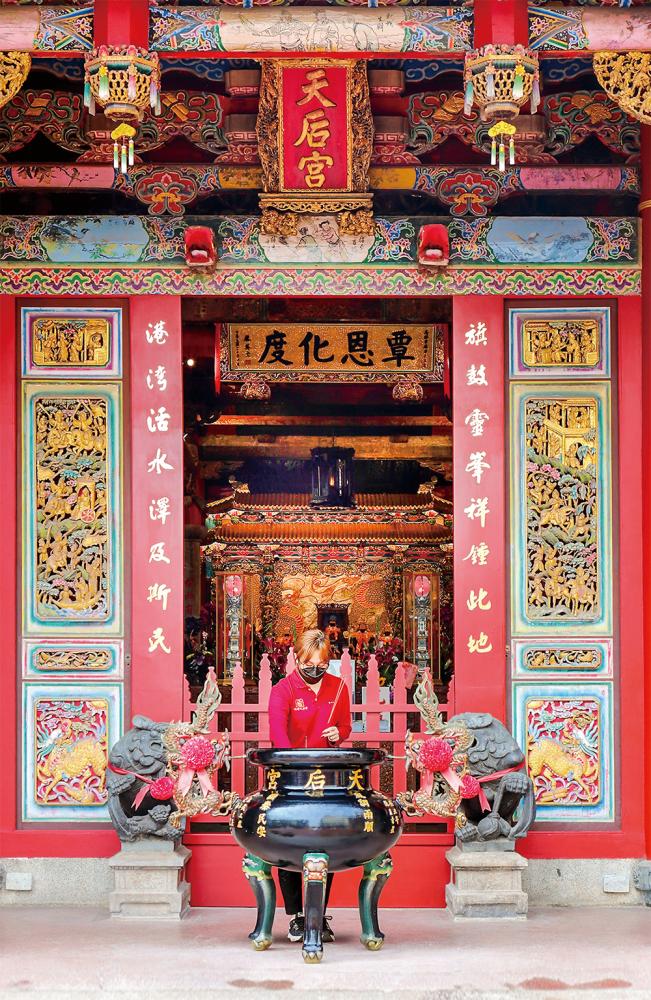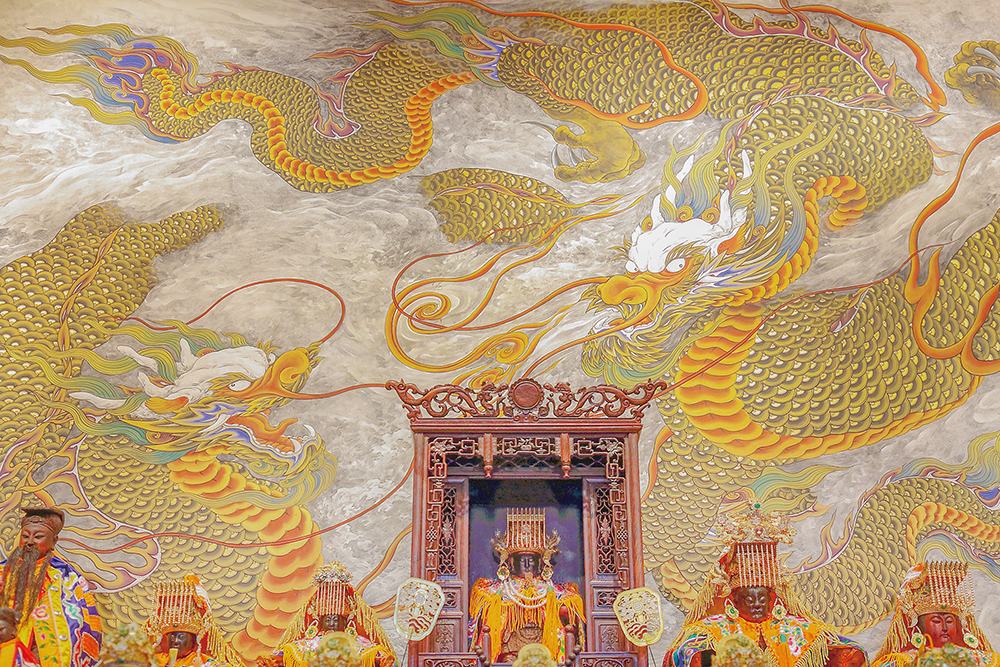發布日期:2022-04-30更新日期:2022-04-30
An Amazing Sight to Behold: Cijin Tianhou Temple
Listed as a municipal-level heritage site, Cijin Tianhou Temple has been a landmark for 349 years. A recent renovation, which took more than three years to complete, was unveiled in October 2021. This newly restored religious center in Cijin is again luring visitors eager to experience its graceful antiquity and historical magnificence.

Established in 1673, Cijin Tianhou Temple is located on bustling Miaocian Road. It was the first temple in Kaohsiung dedicated to Mazu, the goddess of the sea and one of Taiwan's most popular deities. The street market that surrounds Cijin Tianhou Temple has developed and flourished with the shrine as its center. The temple is always full of people praying and burning incense. Over the centuries, it has surely been one of Taiwan's busiest places of worship.
The status of Cijin Tianhou Temple in the hearts of believers is self-evident. In the early days, when people built new boats, it was customary to sail three circles in front of the temple while praying to Mazu for safety at sea and abundant catches. The temple has guarded the land and the people of the region for generations.
Renowned Taiwanese traditional craftsmen were invited to participate in the temple's recent restoration. Among them was Wu Cyuan-kun, an expert in crafting and assembling the wooden frames, beams, and columns at the heart of many old-style buildings. He was joined by clay maestro Lyu Sin-yi, master painter Syu Liang-jin, and Chen Cuan-di, an artisan specializing in jiannian shard art, a type of three-dimensional mosaic sculpture.
Their exquisite craftsmanship and artistic talents have given the temple and its folk artifacts a dazzling and haunting beauty.

Highlights include the illuminated dragon lacquer painting, and images of a phoenix and a qilin (a mythical Chinese creature, somewhat like a unicorn) created by a kind of wet gilding, in which gold powder is applied to a wet primer to enhance the artwork's light and shade. These are the work of master artist Syu Liang-jin.
The main hall contains murals — including Qin Shubao and Luo Cheng in Combat — that were created by the late Chen Yu-feng, one of Taiwan's most famous temple artists.
The statues of the two protector generals who stand beside Mazu, Qianliyan and Shunfenger, have a majestic and vivid appearance. In addition, the stone steps at the entrance of the temple actually arrived long ago in Taiwan as ballast on a ship. The fashioning of these ballast stones into steps symbolizes Han migrants putting down roots in their new home.
Visiting this historic site, one can marvel at exquisite artifacts while immersed in the ambiance created by incense smoke. If you are able to chat with locals, you will surely find yourself learning about Cijin's captivating folk culture and customs.
旗津天后宮 百年風華 熠熠生輝
矗立於旗津349年的國家三級古蹟(追加翻譯:直轄市定古蹟)「旗津天后宮」歷時三年多的整建修復,在2021年10月完工,重啟旗津百年信仰中心,邀請您一同前來欣賞旗津天后宮世紀流轉的歷史風華。
建於西元1673年的旗津天后宮座落在人潮絡繹不絕的廟前路,是高雄第一座奉祀媽祖的廟宇,旗津街市商埠以天后宮為中心,發展開來,數百年來香火鼎盛。
旗津天后宮在信眾心中的地位不言而喩,早期打造新船,照例得在廟前繞三圈,向媽祖祈求航海平安滿載而歸方能下水,數代以來守護這一方土地與人民。
此次旗津天后宮的修復聘請台灣傳統工藝名師參與修復,包括大木作(支撐屋頂的木構架)傳統工藝吳權坤司阜、泥作傳統工藝呂新義司阜、彩繪傳統工藝許良進司阜、剪黏傳統工藝陳篡地司阜,精湛的工藝技術和藝術造詣讓天后宮隨處可見的民間藝術作品,熠熠生輝。
旗津天后宮精彩亮點包括彩繪大師許良進繪作的龍泥金畫與鳯凰、麒麟擂金畫(沾金粉在未乾的底漆上,呈現題材的明暗層次);而正殿「秦叔寶、羅成雙比武圖」等彩繪壁畫為國寶級彩繪大師陳玉峰的作品。媽祖身邊的兩大護法將軍:鎮殿千里眼、順風耳兩位將軍雕像面容威而不嚴、神態生動;此外,天后宮門口壓艙石台階,是建廟先人當初渡海來台時,船隻內部所使用的壓艙石(船艙底部置放石頭即為壓艙石,可使船身平穩航行),壓艙石製作成台階,代表先人們落地生根的意涵。
走訪旗津天后宮,在香煙裊裊中,細細品味天后宮最精湛的民間工藝作品,也與居民話家常,體驗旗津最動人的風土人情。